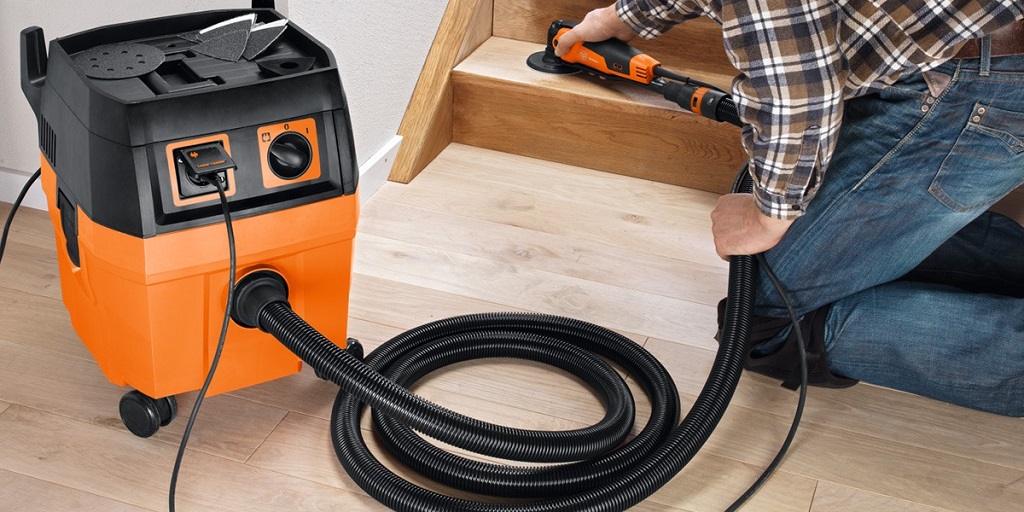Dust may seem like a minor inconvenience, but in the world of construction, manufacturing, and DIY projects, it’s a silent hazard. Fine particulate matter, often invisible to the naked eye, poses severe health risks. This guide explores the importance of power tool dust extraction systems and how they safeguard your health, workspace, and tools.
Let’s dive deep into the subject while exploring resources like Bestusatools to help you make informed decisions.
Understanding Fine Particulate Matter

Fine particulate matter (PM2.5 and PM10) refers to microscopic particles suspended in the air. These particles, which originate from activities like sawing, grinding, and sanding, can easily infiltrate respiratory systems, causing:
- Chronic Respiratory Issues: Asthma, bronchitis, and silicosis are common outcomes.
- Cardiovascular Complications: Studies link fine dust exposure to higher risks of heart attacks and strokes.
- Long-Term Occupational Hazards: Prolonged exposure can lead to life-altering conditions, impacting workers’ health and livelihoods.
According to the World Health Organization (WHO), 92% of the world’s population lives in areas where air quality exceeds recommended limits. Fine dust generated by power tools contributes significantly to this statistic.
How Dust Extraction Systems Work
Dust extraction systems are engineered to remove particulate matter at its source. Their core components include:
- Suction Mechanism: High-powered vacuums that capture dust as it forms.
- Filters: Typically HEPA-rated, capable of trapping particles as small as 0.3 microns.
- Dust Collection Units: Secure containers to store collected dust for safe disposal.
These systems not only protect your lungs but also extend the lifespan of your tools by preventing dust buildup.
Read More Also: How to Adjust Skateboard Trucks for Stability: A Pro’s Guide
The Importance of Toolbox Talks on Safety
While much focus is placed on power tool safety, hand tools also pose risks. During manual tasks, dust and debris can still be generated, emphasizing the need for regular safety discussions. Reinforce proper practices by including a hand tools toolbox talk in your training sessions.
By addressing dust control alongside other safety protocols, employers can create a culture of responsibility and compliance.
Top Benefits of Power Tool Dust Extraction
Investing in a high-quality dust extraction system offers numerous advantages:
- Health Protection: Reduced risk of respiratory and cardiovascular diseases.
- Cleaner Workspaces: Improved visibility and reduced cleanup time.
- Enhanced Tool Efficiency: Tools perform better and last longer without dust interference.
- Regulatory Compliance: Avoid hefty fines and meet OSHA standards.
Key Features to Look for in Dust Extraction Systems
Choosing the right system is crucial. Prioritize features like:
- Filter Quality: HEPA filters are essential for trapping the smallest particles.
- Portability: Lightweight models are ideal for mobile professionals.
- Suction Power: High cubic feet per minute (CFM) ratings ensure effective dust collection.
- Durability: Systems with robust construction can withstand demanding environments.
Compliance with Dust Control Regulations
Occupational Safety and Health Administration (OSHA) regulations mandate strict controls on exposure to silica dust and other fine particulates. Employers must:
- Provide tools equipped with dust extraction systems.
- Monitor workplace air quality regularly.
- Train employees on proper equipment use and maintenance.
Failure to comply can result in penalties reaching tens of thousands of dollars.
Popular Dust Extraction Systems for Power Tools
Here are some highly recommended dust extraction systems:
- Festool CT 36: Known for superior filtration and compatibility with a range of power tools.
- DeWalt DWV012: Features automatic filter cleaning and a large dust capacity.
- Makita XCV10Z: Lightweight and portable, perfect for job sites.
Each of these options provides robust solutions for managing fine particulate matter.
Maintenance Tips for Dust Extraction Systems
Proper upkeep ensures your system performs optimally:
- Clean or Replace Filters: Blocked filters reduce efficiency and increase wear.
- Inspect Connections: Regularly check hoses and seals for damage or leaks.
- Empty Collection Units Promptly: Prevent overloading, which can strain the vacuum system.
- Store in Dry Conditions: Moisture can damage sensitive components.
Future Trends in Dust Control Technology
Innovation in dust management continues to evolve. Upcoming technologies include:
- Smart Monitoring: Real-time air quality sensors integrated into dust extraction systems.
- Eco-Friendly Materials: Filters and components designed for recyclability.
- Enhanced Portability: Compact systems with wireless capabilities for seamless integration.
These advancements promise to make workplaces even safer and more efficient.
Conclusion
Power tool dust extraction isn’t just about compliance—it’s a cornerstone of workplace safety and efficiency. Fine particulate matter, though often overlooked, can have profound health implications. By investing in a reliable system, you protect your workforce and improve productivity.










+ There are no comments
Add yours